Fierce and foreboding, Doeg the Edomite's dark deeds in the Bible unveil a narrative rich with moral complexity and divine reckoning.
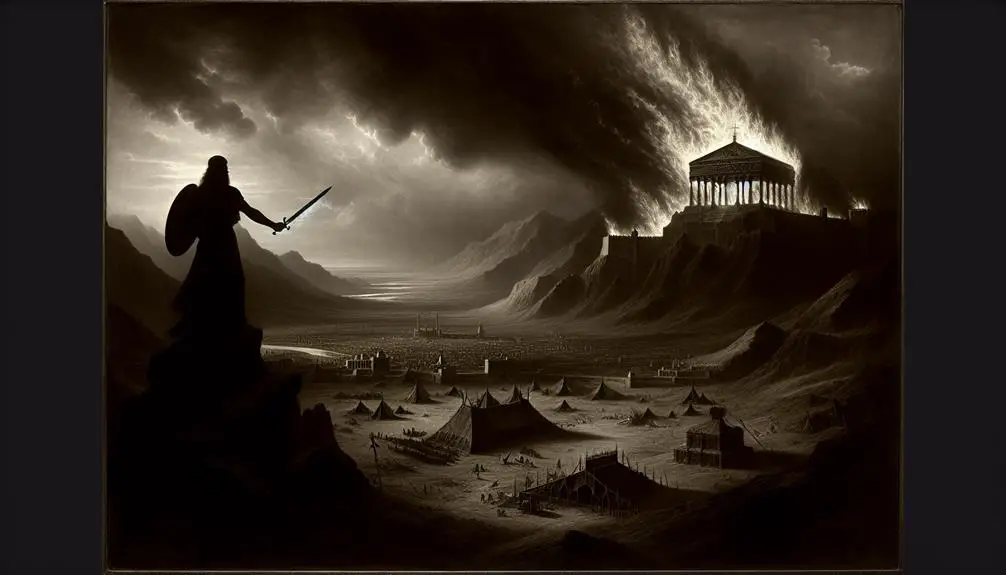
Doeg in the Bible
In the tapestry of biblical narratives, characters both righteous and wicked weave the complex fabric of moral lessons; Doeg the Edomite is no exception. As you explore his story, you'll uncover a figure entwined in the court of King Saul, infamous for his role in the massacre at Nob.
This event not only marks a pivotal moment in David's journey but also presents a myriad of ethical dilemmas and theological implications. The memory and legacy of Doeg stir a mixture of intrigue and horror, offering a unique lens through which to view the darker aspects of biblical history.
What makes his story particularly compelling, however, is the reflection on human nature and divine justice it prompts, leaving one to ponder the intricacies of morality within these ancient texts.
Key Takeaways
- Doeg the Edomite's role in the Bible showcases the complexities of loyalty and power dynamics.
- His actions, including the massacre at Nob, underline the severe consequences of betrayal.
- Doeg's narrative is used to explore ethical dilemmas, emphasizing the impact of moral choices.
- Comparative analysis of Doeg with other biblical figures like Judas Iscariot enhances understanding of his significance in literary and ethical contexts.
Who Was Doeg the Edomite?
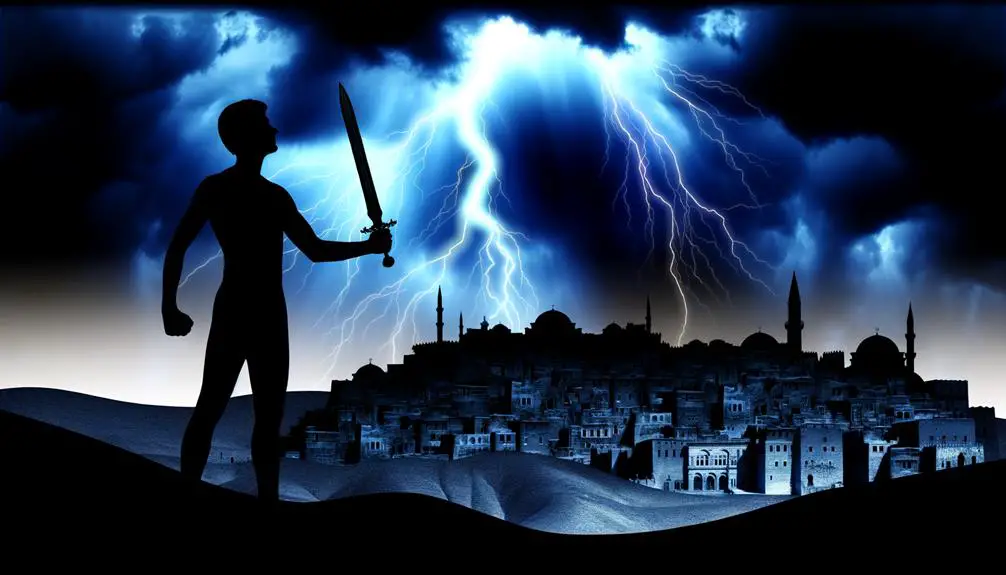
Doeg the Edomite, a figure from the Hebrew Bible, serves as a poignant example of betrayal and moral ambiguity, embodying the complexities of loyalty and power dynamics within the ancient texts. His story, deeply rooted in the Edomite lineage, reflects the intricate interplay of ethnic identities and the perennial struggle for survival and ascension in a volatile socio-political landscape. As an Edomite, Doeg's presence in the narrative underscores the historical tensions and interactions between the Israelites and the Edomites, offering a lens through which to examine the broader implications of his actions and affiliations.
Delving into Doeg's motivations reveals a character driven by a multifaceted set of desires and necessities. His alignment with King Saul, and subsequent actions, can be interpreted as a strategic maneuver to secure his position and influence within the royal court. This pursuit of power and security, however, doesn't exist in a vacuum but is intricately tied to his Edomite heritage, which may have predisposed him to certain loyalties and animosities. The complex interplay between his ethnic background and personal ambitions sheds light on the broader themes of survival, allegiance, and identity that permeate the biblical narrative.
Analyzing Doeg's character and his motivations within the context of his Edomite lineage offers a richer understanding of the narrative's exploration of betrayal and moral ambiguity. It highlights the nuanced ways in which individual choices are influenced by larger socio-political and ethnic dynamics, illustrating the enduring relevance of these ancient texts in probing the depths of human behavior and societal structures.
Doeg's Role in Saul's Court
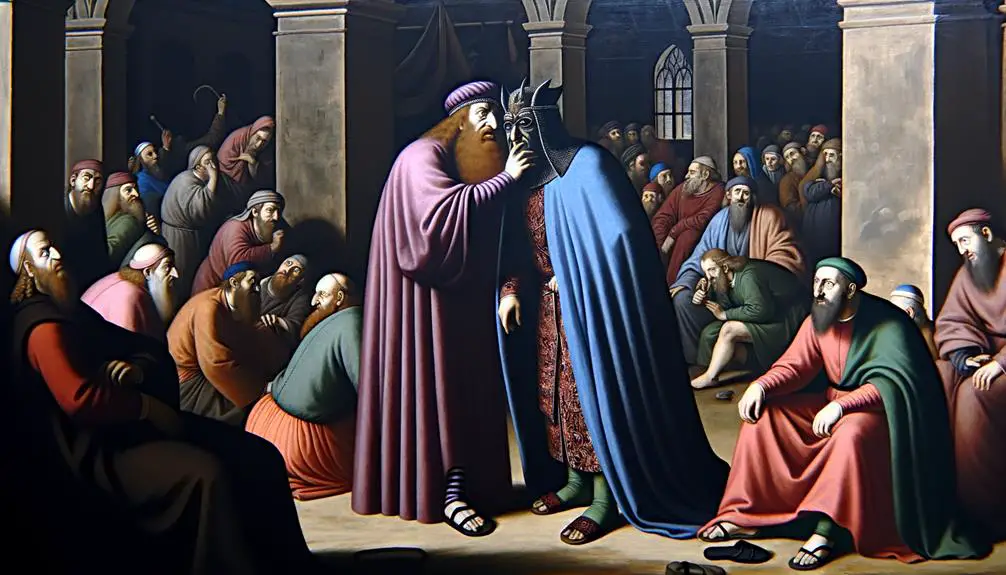
Serving as King Saul's chief herdsman, Doeg the Edomite's role extended far beyond mere oversight of livestock, positioning him as a pivotal figure in the monarch's court with significant influence over the political and military machinations of the time. His position implied not just agricultural responsibilities but also a strategic advisory role, leveraging his Edomite connections to forge alliances that could benefit Saul's reign. These Edomite alliances were crucial, as they provided Saul with intelligence and military support, enhancing his ability to respond to external threats.
Doeg's unique position as an Edomite in Saul's court underscores the complexity of his role. He wasn't merely a foreigner serving at the pleasure of the king; rather, he was a trusted advisor whose insights into the geopolitical landscape were invaluable. Saul's trust in Doeg suggests a relationship built on more than just utility. It implies a level of reliance on Doeg's counsel, possibly extending to matters of state security and diplomatic strategy.
This trust, however, also highlights the darker facets of political power plays within Saul's court. Doeg's influence, while beneficial in terms of military and diplomatic maneuvering, also positioned him as a key figure in the enforcement of Saul's will, wielding power that could shape the fate of Saul's adversaries. His role, therefore, was multifaceted, encompassing the management of the kingdom's livestock while simultaneously engaging in the intricate web of political, military, and diplomatic strategies that defined Saul's reign.
The Massacre at Nob Explained
You must understand that the massacre at Nob is a pivotal event, deeply intertwined with Doeg's allegiance to King Saul. This act not only reveals the extent of Saul's paranoia but also marks Nob's tragic end, illustrating the dire consequences of political and spiritual conflicts.
Analyzing the aftermath and implications, you'll uncover the profound impact on Saul's reign and the broader narrative of the Israelite community.
Doeg's Role Identified
Analyzing Doeg's involvement reveals his pivotal role in the tragic Massacre at Nob, where he executed King Saul's orders, leading to the deaths of numerous priests. Understanding Doeg's background and Edomite culture is essential to grasp his actions. Edomites were known for their warrior culture, which may have influenced Doeg's ruthless efficiency.
Aspect |
Detail |
Impact on Massacre |
|---|---|---|
Background |
Edomite |
Culturally inclined toward conflict |
Role |
King Saul's chief herdsman |
Positioned to execute orders |
Action |
Executed priests |
Directly responsible for the massacre |
This structured approach reveals how Doeg's cultural background and position under King Saul directly contributed to the catastrophic outcome at Nob, showcasing his significant yet tragic role in this episode.
Nob's Tragic End
Having examined Doeg's crucial role in the massacre at Nob, let's now focus on the event itself, which marked one of the darkest chapters in biblical history. The geography of Nob, previously a sanctuary, played a pivotal role in the tragedy that unfolded. Doeg's psychology, driven by loyalty and fear, precipitated a massacre that erased a holy community.
The serene landscape of Nob, contrasting sharply with the violence it witnessed.
Priests, unaware of their impending doom, carried out their sacred duties.
Doeg, a figure torn between duty and morality, executing orders.
The shocking silence that followed the chaos, a witness to the horror.
Artifacts of daily life, abruptly abandoned, as a testament to the sudden devastation.
This event stands as a stark reminder of the consequences of unchecked power and fear.
Aftermath and Implications
The aftermath of the massacre at Nob reveals a complex tapestry of political, social, and religious implications that forever altered the landscape of ancient Israelite society.
Doeg's repentance, a detail often debated among scholars, stands as a poignant reflection of personal accountability within the broader narrative. His actions, rooted in his Edomite lineage, underscore the intricate interplay between ethnic identities and their roles in biblical narratives.
This massacre not only decimated a priestly community but also deepened the divisions between different factions within Israel. The event catalyzed a reevaluation of loyalty, power dynamics, and the sacrality of sanctuary spaces, setting a precedent for future interactions between political power and religious authority.
Doeg's role, especially juxtaposed with his repentance and Edomite origins, adds layers of complexity to this pivotal moment in biblical history.
David's Reaction to Doeg's Actions
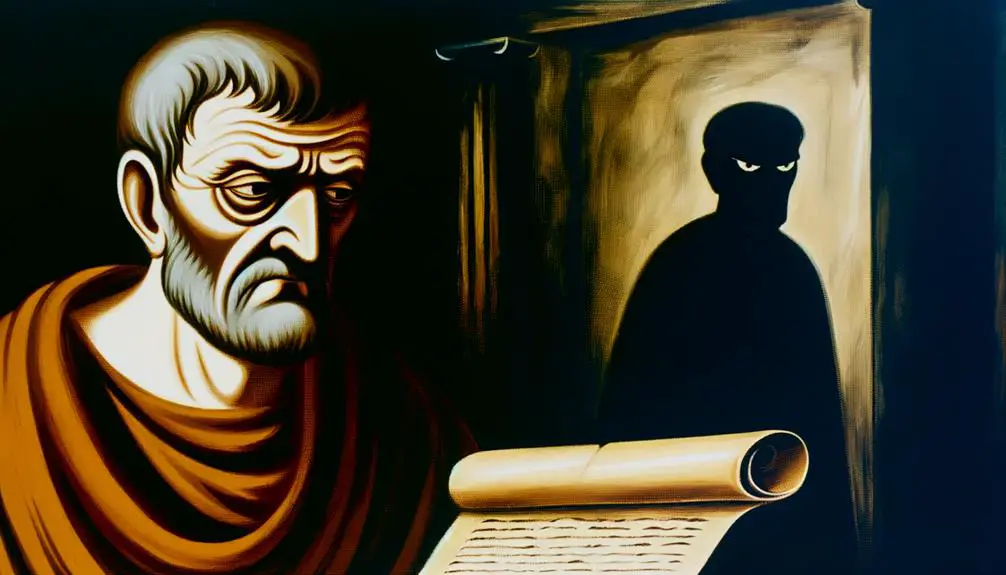
David's profound dismay at Doeg's betrayal is palpable, reflecting a deep-seated sense of betrayal and moral outrage. The narrative vividly paints David's lament and emotional turmoil, as he grapples with the consequences of Doeg's actions. This reaction isn't merely a personal grievance; it embodies a broader, more profound disillusionment with loyalty and the human capacity for malevolence.
To understand David's reaction, consider these elements:
- The shock of betrayal from an unexpected quarter.
- The anguish over the loss of innocent lives, emphasizing the profound moral implications.
- The realization of vulnerability, as David recognizes the precariousness of his position.
- The struggle with feelings of guilt, wondering if his actions indirectly contributed to the tragedy.
- The wrestling with forgiveness and the desire for justice, highlighting David's complex moral and emotional landscape.
This moment of crisis reveals much about David's character, notably his capacity for deep empathy and introspection. It also sets a precedent for his future leadership, illustrating the heavy burden of command and the moral complexities inherent in governance.
In dissecting David's reaction, it's crucial to appreciate the historical and cultural context. This wasn't merely a personal feud but a pivotal event that shaped the socio-political landscape of the time. David's lament and emotional turmoil underscore the timeless struggle with betrayal, loss, and the quest for justice, resonating deeply with contemporary themes of leadership, morality, and human frailty. Through this lens, David's response to Doeg's actions becomes a profound commentary on the human condition, offering rich material for scholarly analysis and reflection.
Ethical Dilemmas and Doeg
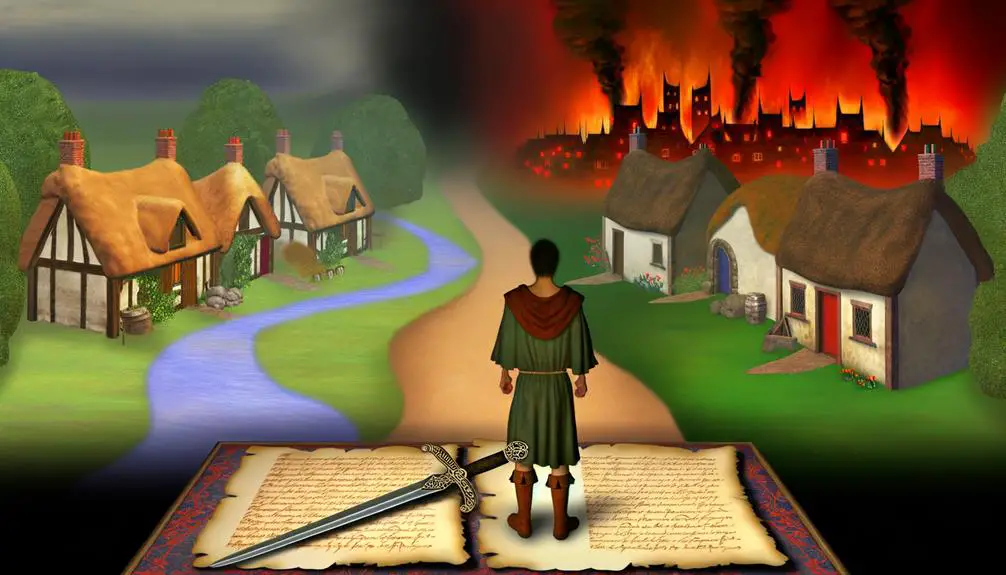
In examining Doeg's narrative within the biblical context, you encounter a complex interplay of moral choices that underscore the multifaceted nature of ethical decision-making. His actions, particularly the betrayal, illuminate the profound consequences that can arise from individual decisions, especially within the spheres of leadership and responsibility.
This analysis prompts you to consider how leadership roles amplify the impact of such ethical dilemmas, inviting a deeper understanding of the intertwining of personal integrity and communal welfare.
Doeg's Moral Choices
Examining Doeg's actions in the biblical narrative reveals a complex web of ethical dilemmas that challenge traditional moral evaluations. His choices, steeped in moral ambiguity, underscore the intricate nature of decision-making ethics within a fraught historical and spiritual context.
- A dimly lit chamber where crucial decisions are whispered in hushed tones
- The weighty scroll of law, symbolizing the heavy burden of ethical judgment
- The shadowy figure of Doeg, caught between loyalty and personal ambition
- The sharp blade, representing the cutting decisions that sever ties and destinies
- The tumultuous storm clouds overhead, mirroring the internal conflict of choosing between right and wrong
In this analysis, you're invited to delve into the subtleties of Doeg's moral landscape, where the lines between righteousness and self-interest blur, presenting a compelling study of human nature and ethical complexity.
Betrayal and Consequences
Doeg's act of betrayal, a pivotal moment in biblical narrative, presents a profound ethical dilemma that challenges our understanding of loyalty and its consequences.
When you explore the depths of this story, you're confronted with the harsh realities of loyalty tested and deception's impact.
The narrative intricately weaves through the moral fabric, highlighting how one's allegiance can drastically alter the course of numerous lives. It forces you to ponder the weight of your decisions and the ripple effects they can create.
Deception, as illustrated through Doeg's actions, not only unveils the fragility of trust but also sets a precedent for the devastating outcomes of betrayal.
This account serves as a scholarly exploration into the complexities of ethical decision-making, where choices aren't merely personal but have far-reaching implications.
Leadership Responsibilities
Amidst the unfolding narrative of Doeg's betrayal, one can't overlook the profound ethical dilemmas that leadership responsibilities entail, thrusting leaders into a crucible of moral decision-making.
Ethical leadership demands navigating through murky waters, where each decision carries significant consequences. As you delve deeper into the story, you're reminded of the weighty implications of leadership choices:
- The razor-edge balance between justice and mercy
- The influence of personal biases on decision-making
- The ripple effects of actions on the wider community
- The challenge of maintaining integrity under pressure
- The inevitable confrontation with one's own moral compass
These elements highlight the complex terrain of ethical leadership and underscore the far-reaching impact of decision-making consequences. Leaders, akin to Doeg, find themselves at crossroads, where their choices not only define their legacy but also the destiny of those they lead.
Doeg's Legacy and Memory

Reflecting on Doeg's actions provides insight into his enduring legacy and how he's remembered in biblical history. As you delve deeper into the narrative, it's crucial to consider Doeg's archetype and the historical accuracy of the accounts. His portrayal as an antagonist, particularly in the massacre at Nob, positions him as a complex figure whose actions have been scrutinized for their moral and ethical implications.
Analyzing Doeg's archetype, you find that he embodies the traits of betrayal and malevolence, serving as a cautionary figure within the scriptural text. This archetype, while specific in its biblical context, resonates through historical and literary analyses as a representation of the dangers posed by unchecked ambition and loyalty to power over ethical considerations. The precision of these accounts, while debated among scholars, underscores the importance of scrutinizing historical accuracy to fully understand the implications of Doeg's actions.
His legacy, therefore, isn't just a narrative of villainy but a nuanced exploration of the consequences of actions taken in the pursuit of power. This scholarly examination reveals that Doeg's memory in biblical history serves as a multifaceted lesson on the complexities of moral decision-making and the profound impacts those decisions can have on communities and historical narratives.
As you reflect on Doeg's legacy, consider the broader implications of his story. It's a powerful reminder of the enduring impact of our actions and the importance of critically examining historical narratives to glean deeper insights into human behavior and morality.
Theological Implications of Doeg's Story

Exploring the theological implications of Doeg's story necessitates a careful examination of his actions and their resonance within the broader scriptural narrative. His role, primarily seen in the massacre of Nob's priests, offers a profound character study in divine justice, betrayal, and the complexities of moral agency. By analyzing Doeg's actions, you delve into a narrative that challenges and expands the understanding of righteousness and divine retribution within the biblical context.
- *Divine Justice*: Doeg's actions trigger a series of events that question the immediacy and nature of divine justice. How does retribution manifest, and what lessons can you draw about divine timing and intervention?
- *Moral Ambiguity*: The story exemplifies the blurred lines between right and wrong, prompting you to ponder the complexities of ethical decision-making within a scriptural framework.
- *Betrayal and Loyalty*: Doeg's betrayal highlights themes of loyalty, trust, and the consequences of their absence, urging a reevaluation of these values in a spiritual context.
- *Providence and Free Will*: Through Doeg, you're invited to explore the tension between divine providence and human free will, questioning the extent of each in shaping history and destiny.
- *Character Study*: As a character study, Doeg's narrative encourages a deeper reflection on human nature, sin, and the possibility of redemption, enriching your understanding of biblical characters' multifaceted personalities.
Analyzing Doeg's story through these lenses not only broadens your comprehension of biblical narratives but also enriches your spiritual discernment, offering invaluable insights into the enduring questions of divine justice, moral complexity, and the human condition.
Comparing Doeg to Other Biblical Figures
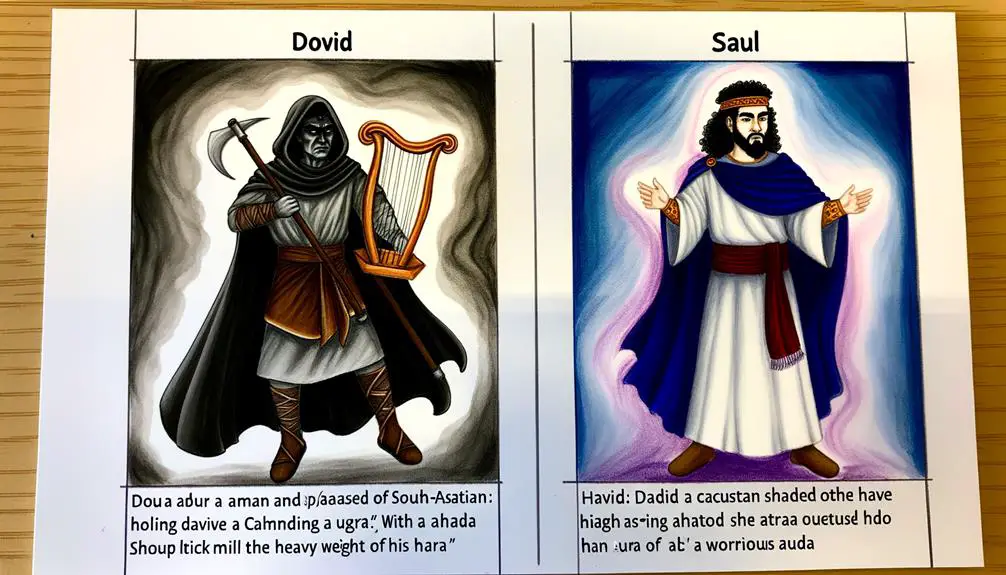
When comparing Doeg to other biblical figures, it's crucial to consider the unique ways in which his actions illuminate broader themes of morality and divine justice within the scriptures. Doeg's psychology, characterized by his ruthless betrayal and massacre at Nob, offers a stark contrast to the often complex moral landscapes navigated by other figures. His actions, devoid of the repentance seen in characters like King David, underscore a narrative of unrepentant wrongdoing that sharply delineates the boundaries of comparative righteousness within the biblical text.
Analyzing Doeg alongside figures such as Judas Iscariot, whose betrayal leads to the crucifixion of Jesus, reveals a nuanced layer of biblical understanding. Both characters enact betrayal, yet the context and outcomes of their actions diverge significantly. Judas's betrayal, followed by his remorse and suicide, presents a complex interplay of sin and repentance, absent in Doeg's narrative. This lack of remorse in Doeg's psychology emphasizes a critical examination of the heart's posture towards divine laws and morality.
Furthermore, when juxtaposed with Joseph's brothers, who sold him into slavery out of jealousy but later sought forgiveness, Doeg's actions underscore a refusal to seek redemption. This comparative analysis not only highlights Doeg's unyielding nature but also enhances our understanding of biblical themes of redemption, repentance, and divine justice.
Through this lens, Doeg emerges not merely as a historical figure but as a literary device to explore the depths of human morality and the consequences of actions within a divine framework. His story, when contrasted with others, enriches the tapestry of biblical narratives, offering profound insights into the nature of righteousness and the complexity of human psychology.
Frequently Asked Questions
How Do Modern Archaeological Findings Relate to Doeg the Edomite and His Historical Context?
You're looking at how modern archaeological findings connect with historical contexts, particularly focusing on Edomite trade routes. By using advanced archaeological methodologies, researchers have uncovered evidence that sheds light on the economic and social systems of the time. These insights help us understand the broader historical setting.
Although directly linking them to specific biblical figures like Doeg the Edomite requires careful analysis and interpretation of both archaeological data and ancient texts.
What Are the Linguistic Origins and Meanings of the Name "Doeg" in Ancient Hebrew and Surrounding Cultures?
Exploring the name 'Doeg,' you dive into its etymology, seeking its roots in ancient Hebrew and its resonance in surrounding cultures. This quest isn't just about tracing letters; it's unraveling the cultural significance embedded within the name.
Each phoneme and syllable carries historical weight, reflecting societal values, beliefs, and possibly the social status of those who bore it. Through this analytical lens, you're not only decoding a name but also piecing together a mosaic of ancient life.
Are There Any Traditional Jewish or Christian Rituals That Specifically Commemorate or Reference the Actions of Doeg the Edomite?
Digging deep, you won't find traditional Jewish or Christian rituals that shine a spotlight on Doeg's actions or delve into Edomite customs in a commemorative way.
Doeg's morality, steeped in controversy, doesn't get the red carpet treatment in religious observances. Instead, his story serves as a cautionary tale, analyzed and discussed for its ethical implications rather than celebrated or ritualized in the tapestry of Jewish and Christian practices.
How Has Doeg the Edomite Been Portrayed in Various Forms of Art, Literature, and Media Throughout History?
You're exploring how historical figures have been represented across the arts, focusing on the Edomite influence. Artistic interpretations of Doeg have varied widely, reflecting the complex nature of his actions and their impact.
These portrayals span from classical paintings to modern digital media, each offering a unique lens. Scholars and artists alike delve into his narrative, analyzing how his story has been shaped and reshaped to fit the moral and cultural contexts of different eras.
What Are the Psychological Profiles or Analyses of Doeg the Edomite Based on His Actions and Decisions as Described in the Bible?
You're diving into the moral ambiguity and leadership psychology reflected in certain decisions and actions. Analyzing these behaviors without biblical context, one might conclude they stem from complex motives, possibly survival or ambition-driven.
Such a profile suggests a person navigating ethical dilemmas, perhaps prioritizing personal or group interests over broader moral principles. This analytical approach uncovers layers of decision-making processes, revealing how leadership roles can amplify moral and ethical challenges.
Conclusion
In analyzing Doeg's narrative, you uncover a chilling testament to the complexities of moral judgment within biblical stories. His actions, while stark, prompt a deeper reflection on loyalty, power, and the ease with which one can become an instrument of destruction.
Comparing him to other biblical figures magnifies a universal theme: the thin line between righteousness and villainy. As you ponder Doeg's legacy, consider how his story mirrors the perennial human struggle with ethical dilemmas, leaving his true moral standing an enigma wrapped in ancient text.

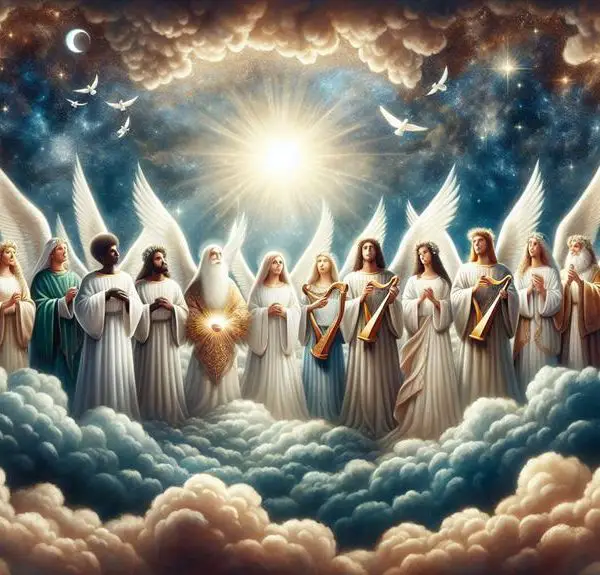

Sign up